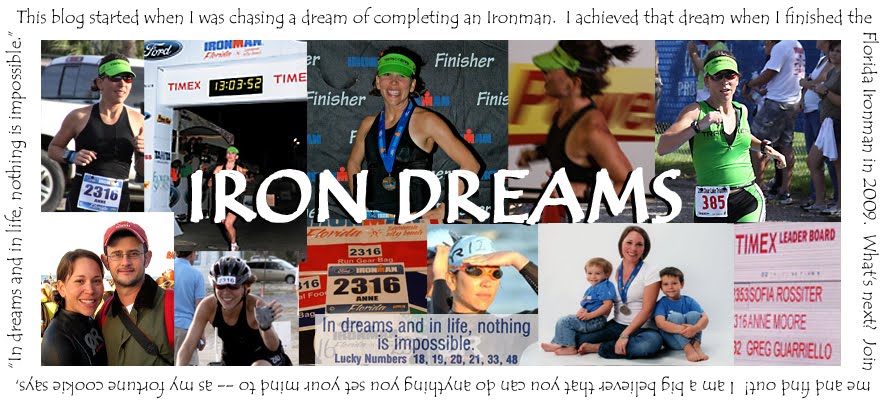For those of you who are interested in being a part of this journey but who are unfamiliar with the sport I thought I would take this opportunity to share some of the tri lingo so that this blog is easier to navigate.
Some Common Triathlon LINGO...
(courtesy of http://www.1sttri.com/triathlonlingo.htm)
Brick Workout
A type of workout that triathletes do to simulate race conditions. Most triathlons are in the order Swim, bike, run. When triathletes switch from bike to run, their legs feel weird. A brick workout lets the racer practice the unusual feeling, so it feels more comfortable during a race.
Body marking
Because there is a swim involved, paper numbers cannot be used to mark the athletes. So each triathlete's race number is written on arms and legs. This lets officials mark down numbers as triathletes exit this water. This helps them to keep track that everyone exited the swim, also helps to identify triathletes throughout the entire race.
Cap
The latex swim cap that is given to each triathlete as they enter a race. A different colored cap will represent each age-group.
Clipless Pedals
A type of bike pedal that bike shoes attach to. There is a cleat that attaches to the bottom of a bike shoe(with screws). The shoe will then "clip in"to the pedal. This will allow pulling up on the pedal, during the pedal stroke. They will make a bike rider more efficient with each pedal stroke.
IRONMAN
The most well-known triathlon distance. It consists of a 2.4 mile swim, 112 mile bike and a 26.2 mile run. The distance is referred to as "long distance". The IRONMAN triathlon started in kona, Hawaii, back in 1978. The event is done every year. In the 1990's IRONMAN does not just refer to the race in Hawaii, but is used when talking about the distance.
IRONMAN 70.3
"Half" IRONMAN distance. 1.2 mile swim, 56 mile bike and 13.1 mile run. This is the race distance that I am currently training for.
Olympic Distance Triathlon
Consists of a .9 mile swim, 24.8 mile bike and a 6.2 mile run. Probably the most common distance of triathlon offered, although some races modify these distances. The Olympics will be this distance. The race I am planning to do in August is this distance.
Sprint distance
A race that consists of a .5 mile swim, 15 mile bike and a 3.1 mile run race distances (some races modify these distances). The race I did last week was about this distance.
Transition
The part of the race where the athlete changes shoes or equipment to move onto the next part of a race. There are two in every triathlon. They are from swim to bike, commonly called T1, and bike to run, commonly called T2.
Transition Area
The place set marked off for transitions to take place. All the equipment the athlete will use in the race is placed in this area. The bike is parked at a rack with the racer's number. Bikes, helmets and shoes are place here for the so transitions can take place quickly and orderly.
Triathlon
A sport that consists of three sports, most commonly swim, bike, run.
USA TRIATHLON
The United States triathlon national governing body. They set the status quo, and regulate on how people qualify for the national championships.
Wave
Based on your age. It is the time you will start the swim. Age-groups are sent off at intervals to ease congestion in the water and on the bike course. The time is then subtracted from a racer's finishing time.
Wetsuit
Worn during the swim to keep swimmers warm. Water must be 78 degrees or below, in order for racers to be allowed to wear wetsuits. They also help make a swimmer more buoyant. This will let slower swimmers swim faster, because they are better positioned on top of the water. Weaker swimmers like wetsuits, while stronger swimmers hate them. I would love to get to wear a wetsuit for the Longhorn, but the water will likely be too warm.

No comments:
Post a Comment